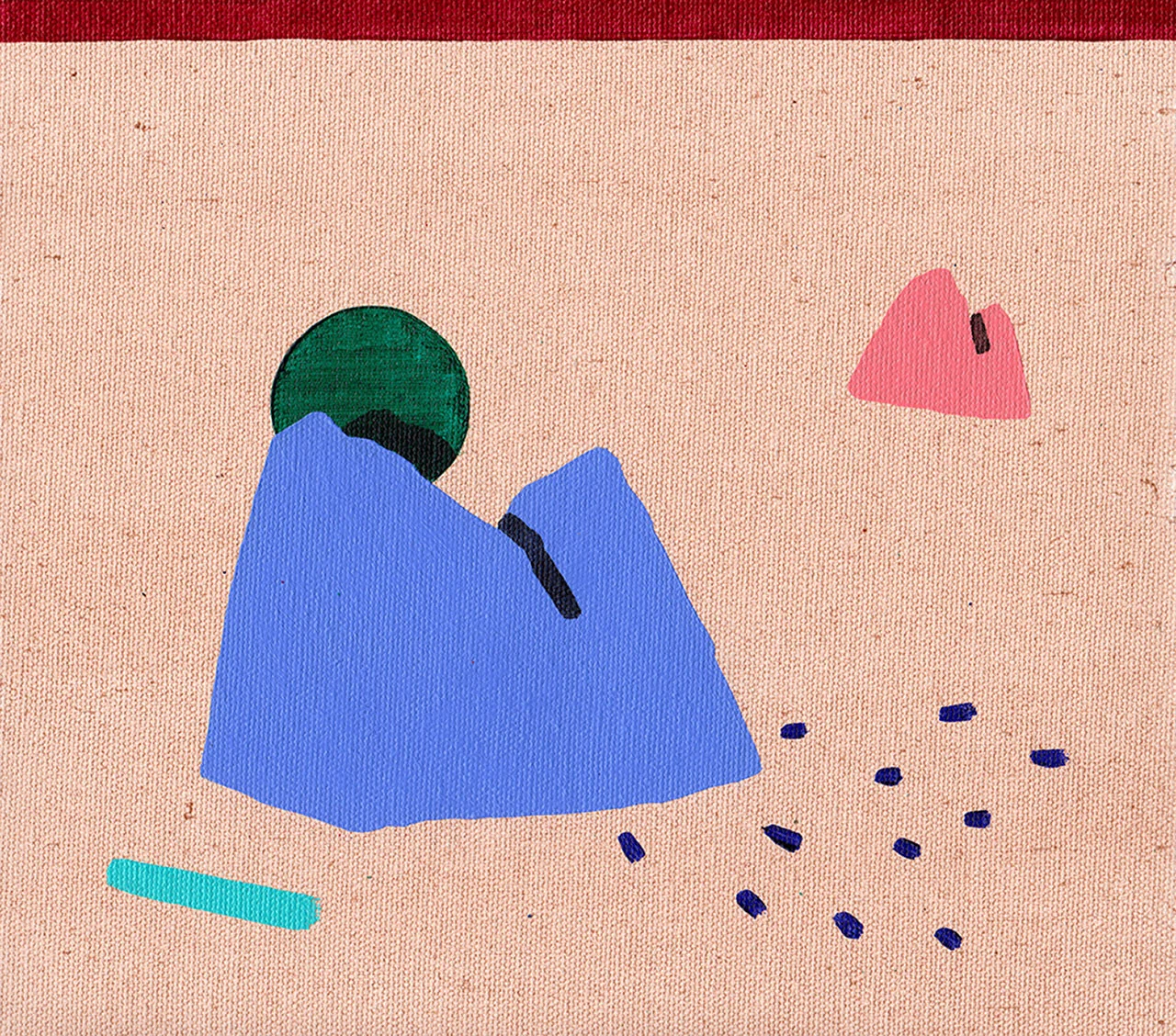DAVID ESQUIVEL || Inspired By The Odd Moments In Life

It was the bold colours and honest simplicity that first drew us to the works of David Esquivel.
You never really know what you are looking at, but the mystery of his subjects and their unique composition is what captivated us to look closer and deeper into what they all truly mean. For David, his art is a form of self expression where his focus lies in the composition rather than the subject matter. The paintings often use landscapes as the subject, combining thick brush strokes with bold colours and geometric shapes and lines.
We had the pleasure of interviewing David Esquivel for a glimpse into his creative process, and his journey towards becoming a visual artist.
P: Pendulum Magazine
D: David Esquivel
P: Can you tell us about your background and how you arrived at where you are today?
D: I’m a 24 year old self-taught painter from Aurora, Illinois. I got into art relatively late I feel. I took an art class in my sophomore year of high school and my teacher was very supportive of the work I made. That is where my interest for art began. After graduating, I decided to not go to college and try to figure out how to be an artist on my own. I have been working ever since trying to just keep progressing and seeing how far it will take me.
In Your Light by David Esquivel
Narusawa by David Esquivel
P: How would you describe your painting style? How has it evolved over the years?
D: My style came about from teaching myself. I was making more representational pencil drawn work but it felt empty to me. While technically I was average, compositionally my work was weak. I decided to break everything down and start with trying to get as much as I can out of as little as possible. My rules to myself were I couldn’t use any recognizable images, and I could only use three colours. After making a ton of really bad work, I started to learn how to get emotions out of the composition rather than the subject matter, which I was trying to do before. That has turned into making more landscapes that are compositionally driven yet simple subjectively.
P: Where do you find inspiration for your work?
D: I find inspiration in the little odd moments that happen throughout the day, anything that breaks up the natural rhythm of the day. That could be tripping on my way out the door or talking to a stranger. I find those moments are most affecting.
Villa by David Esquivel
P: Is there a part within the creative process that excites you the most?
D: Adding the shadows feels nice.
P: How would you know when a piece of work is done?
D: Once I add the shadows. That usually happens at the end of the process and it tends to ground the whole composition. That is when it feels completed and resolved.
P: What’s your favourite or most memorable project you’ve ever worked on?
D: My favourite project I’m working on right now is actually some writing I’m trying to do. Raretempo.com has been kind enough to let me write blog posts on their site. I like the challenge of trying to put whatever knowledge I’ve gleaned from art into words that hopefully others can relate to.
P: Is there an artist that inspires you?
D: Although I’m not an illustrator, there is one whose work I love. The incredibly talented Molly Martin makes work that is so genuine and intimate. Visit her here on Instagram if you want to check her out.
Bujuku by David Esquivel
P: Are there any upcoming projects you would like to share with us?
D: I’m going to be a part of a group show later this year with Galerie Tracanelli in France. I’m very excited about that, it will be my first time showing work outside of the United States.
Wait by David Esquivel
Sugarloaf by David Esquivel
P: What advice would you give to illustrators looking to develop their own style?
D: I think the same applies for all creatives; you have to constantly make new stuff. Even if it’s just a quick doodle, keep your hands creating. It’s taken me seven years and hundreds of paintings and sketches to feel comfortable with the work I make now. Keep moving forward and be honest with how your work makes you feel.
P: Tell us about a project that has given you the most satisfaction thus far and why.
D: It may seem small but this painting titled “Purple Mountain” was the most satisfying. It was just a personal piece that felt like a big breakthrough for me. I’ve always struggled with getting purple to feel good in a composition but I’m very happy with how this painting turned out. Hopefully it will unlock a whole new area of my painting.
Purple Mountain by David Esquivel
Between Us by David Esquivel
We want to thank David for taking the time to share his thought process and inspiration with us. To learn more about David Esquivel or to see more of his creations, visit here.













